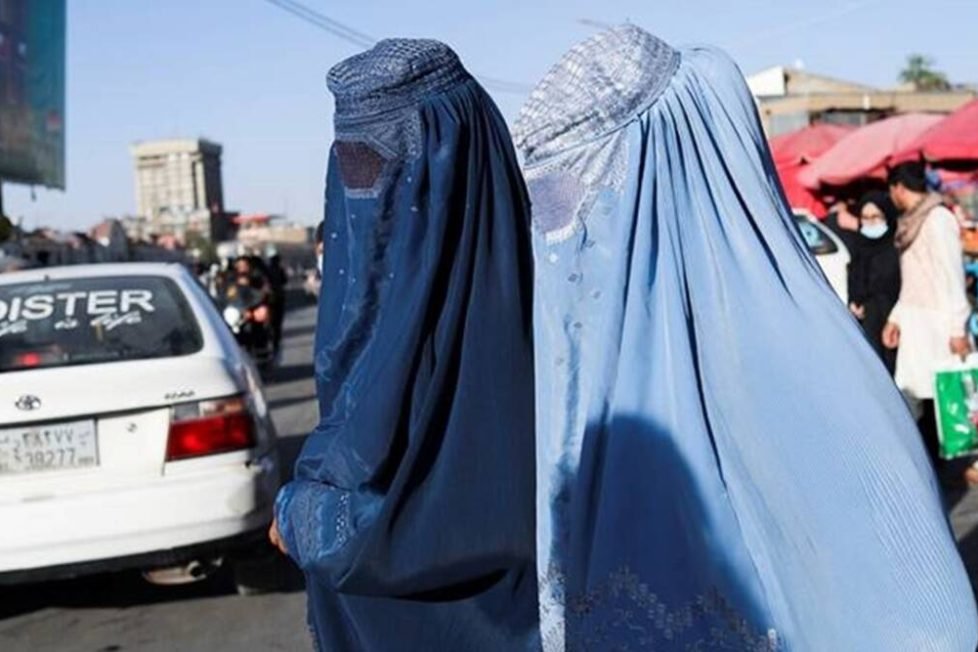Women Empowerment Taliban Style: Male escort and Hijab sack needed to get Taxis
The Biden administration recently praised the Taliban’s openness to women's rights.

The Biden administration recently praised the Taliban’s openness to women's rights.

Islamist propaganda claims that the hijab is empowering for women, when in reality it’s a sort of vaccine passport. You need it to set foot out of the house, creating the illusion of a mobile purdah, a form of ritual segregation.
The Biden administration recently praised the Taliban’s openness to women’s rights.
Meanwhile, the Taliban are going ahead and effectively banning women from taxis unless they wear hijabs.
The Taliban have said women need a hijab — and in some cases a chaperone — to get a taxi ride. Taxi drivers have also been given new moral guidance on how to behave and look.Taliban authorities in Afghanistan on Sunday gave new guidance to taxi drivers, advising them against taking fares from women who do not follow a strict Islamic dress code by wearing the hijab, or Islamic headscarf.
This is a “softer” approach than they’ve taken in the past, but that’s because the Taliban currently want international aid from the Biden administration and other players.
What happens outside Kabul and the NGO sector will likely be another matter. Like Iran, the Taliban are likely to have one set of rules for public areas where foreigners are watching and another set for rural areas where they’re not.
Afghanistan’s Taliban authorities have stated “that women seeking to travel anything other than short distances should not be offered transport unless they are accompanied by a close male relative.” Why, of course. The male guardianship program is a stipulation of Islamic law. What’s more, the Taliban has fashioned its system of governance after that of Iran. Both Iran (the world’s leading Shia country) and Saudi Arabia (one of the world’s leading Sunni countries) have guardianship programs, as they are Islamic and in keeping with Sharia, which holds that women are inferior to men:
Men are the protectors and maintainers of women, because Allah has made one of them to excel the other, and because they spend (to support them) from their means. Therefore the righteous women are devoutly obedient (to Allah and to their husbands), and guard in the husband’s absence what Allah orders them to guard (e.g. their chastity, their husband’s property, etc.). As to those women on whose part you see ill-conduct, admonish them (first), (next), refuse to share their beds, (and last) beat them (lightly, if it is useful), but if they return to obedience, seek not against them means (of annoyance). Surely, Allah is Ever Most High, Most Great. (Quran 4:34)
Women are also required by the Quran to be fully covered, as per the Sharia:
And tell the believing women to reduce of their vision and guard their private parts and not expose their adornment except that which appears thereof and to wrap [a portion of] their headcovers over their chests and not expose their adornment except to their husbands, their fathers, their husbands’ fathers, their sons, their husbands’ sons, their brothers, their brothers’ sons, their sisters’ sons, their women, that which their right hands possess, or those male attendants having no physical desire, or children who are not yet aware of the private aspects of women. And let them not stamp their feet to make known what they conceal of their adornment. And turn to Allah in repentance, all of you, O believers, that you might succeed. (Quran 24:31)
O Prophet, tell your wives and your daughters and the women of the believers to bring down over themselves of their outer garments. That is more suitable that they will be known and not be abused. (Quran 33:59)
Even “the call of nature” is a matter of permission from the male guardian:
Narrated ‘Aisha: The Prophet said to his wives, “You are allowed to go out to answer the call of nature.” (Bukhari 4:149)

Sources: https://www.jihadwatch.org/2021/12/taliban-no-hijab-no-taxi; https://www.jihadwatch.org/2021/12/afghanistan-taliban-implements-no-travel-for-women-rule-unless-accompanied-by-male-guardian
DISCLAIMER: The author is solely responsible for the views expressed in this article. The author carries the responsibility for citing and/or licensing of images utilized within the text.
